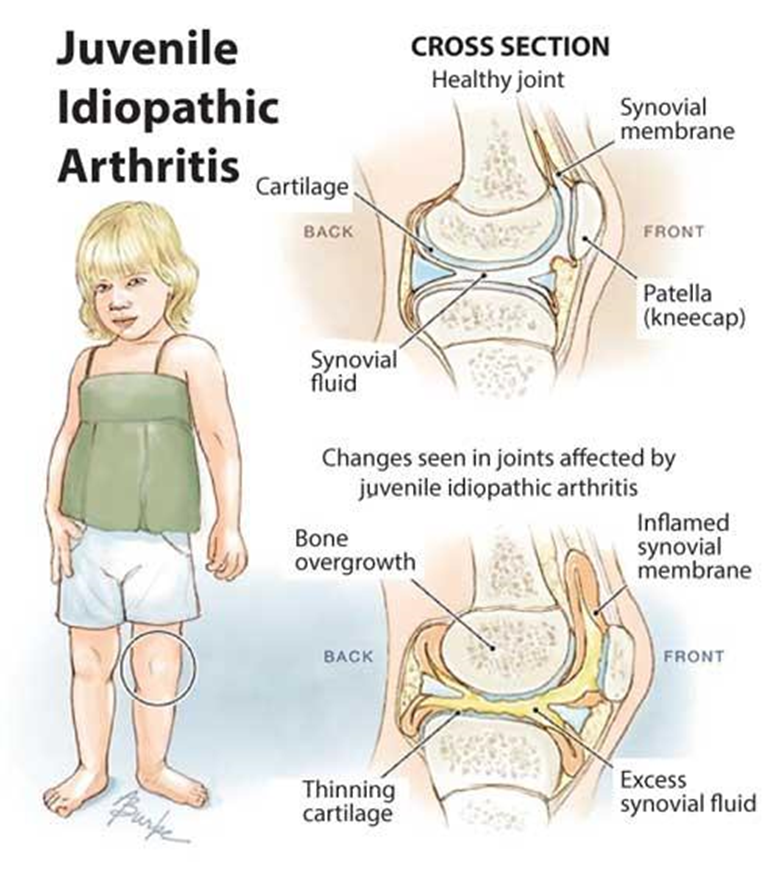A nurse is caring for a 7-year-old child who has a fever, tachycardia, and low oxygen saturation. The nurse reviews the child's laboratory results and notes the following:
- WBC count 15,000/mm^3^ (normal range: 5,000 to 10,000/mm^3^)
- Hgb 8 g/dL (normal range: 10 to 15.5 g/dL)
- Hct 32% (normal range: 32% to 44%)
The nurse should suspect that the child has which of the following conditions?
Leukemia.
Sickle cell anemia.
Hemophilia.
Iron deficiency anemia.
The Correct Answer is B
Choice A reason: Leukemia is not a probable condition, as it is a cancer of the white blood cells that causes abnormal proliferation and accumulation of immature or dysfunctional white blood cells. The child has a high WBC count, which can indicate leukemia, but not necessarily. The child does not have other signs of leukemia, such as bleeding, bruising, bone pain, or lymphadenopathy.
Choice B reason: Sickle cell anemia is a possible condition, as it is an inherited disorder that affects the shape and function of the red blood cells, causing them to become sickle-shaped and rigid. The child has a low Hgb and Hct, which can indicate anemia, and a fever, tachycardia, and low oxygen saturation, which can indicate a sickle cell crisis. A sickle cell crisis is a condition where the sickle-shaped red blood cells block the blood flow and cause tissue ischemia and inflammation.
Choice C reason: Hemophilia is not a likely condition, as it is an inherited disorder that affects the clotting factors, causing impaired blood clotting and increased risk of bleeding. The child has a low Hgb and Hct, which can indicate anemia, but not necessarily hemophilia. The child does not have other signs of hemophilia, such as bleeding, bruising, hemarthrosis, or hematuria.
Choice D reason: Iron deficiency anemia is not a definite condition, as it is a type of anemia that occurs when the body does not have enough iron to produce hemoglobin, the protein that carries oxygen in the blood. The child has a low Hgb and Hct, which can indicate iron deficiency anemia, but not necessarily. The child does not have other signs of iron deficiency anemia, such as pallor, fatigue, weakness, or pica.
Nursing Test Bank
Naxlex Comprehensive Predictor Exams
Related Questions
Correct Answer is B
Explanation
Choice A reason: Encouraging the child to take a 45 min nap daily is not a helpful instruction, as it may interfere with the child's normal sleep pattern and school schedule. The child may benefit from regular rest periods throughout the day, but not necessarily a long nap. ⁵
Choice B reason: Administering prednisone on an alternate day schedule is a helpful instruction, as it is a common way of prescribing corticosteroids for children with juvenile idiopathic arthritis. Corticosteroids are used to reduce inflammation and control symptoms, but they have many side effects, such as growth suppression, weight gain, and osteoporosis. Giving the medication every other day may reduce some of these side effects and improve compliance. ⁶

Choice C reason: Applying cool compresses for 20 min every hour is not a helpful instruction, as it may cause skin damage and discomfort. Cool compresses may be useful for acute inflammation, but not for chronic arthritis. Warm compresses or baths may be more soothing and beneficial for the child's joints. ⁷
Choice D reason: Allowing the child to stay at home on days when her joints are painful is not a helpful instruction, as it may lead to social isolation, academic difficulties, and reduced physical activity. The child should be encouraged to attend school and participate in activities as much as possible, with appropriate accommodations and modifications if needed. The child may also benefit from physical therapy, occupational therapy, and pain management strategies. ⁸
Correct Answer is D
Explanation
Choice A reason: Holding the infant's chin to his chest and knees to his abdomen during the procedure is not a correct action for the nurse to take. This position may cause spinal cord compression or respiratory distress in the infant. The nurse should position the infant on his side with his back arched and his head and knees flexed.
Choice B reason: Placing the infant in an infant seat for 2 hr following the procedure is not a correct action for the nurse to take. This position may increase the intracranial pressure and cause headaches or vomiting in the infant. The nurse should keep the infant flat or slightly elevated for 4 to 6 hr after the procedure.
Choice C reason: Keeping the infant NPO for 6 hr prior to the procedure is not a correct action for the nurse to take. This may cause dehydration or hypoglycemia in the infant. The nurse should follow the provider's orders for fasting, which are usually 2 to 4 hr for clear liquids and 4 to 6 hr for solids.
Choice D reason: Applying a eutectic mixture of lidocaine and prilocaine cream topically 15 min prior to the procedure is a correct action for the nurse to take. This is a topical anesthetic that can reduce the pain and discomfort of the needle insertion. The nurse should apply the cream to the lower back and cover it with an occlusive dressing.
Whether you are a student looking to ace your exams or a practicing nurse seeking to enhance your expertise , our nursing education contents will empower you with the confidence and competence to make a difference in the lives of patients and become a respected leader in the healthcare field.
Visit Naxlex, invest in your future and unlock endless possibilities with our unparalleled nursing education contents today
Report Wrong Answer on the Current Question
Do you disagree with the answer? If yes, what is your expected answer? Explain.
Kindly be descriptive with the issue you are facing.
